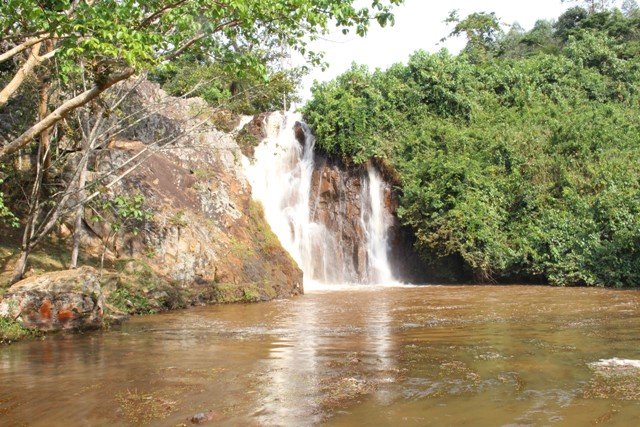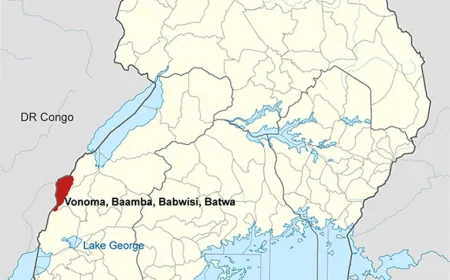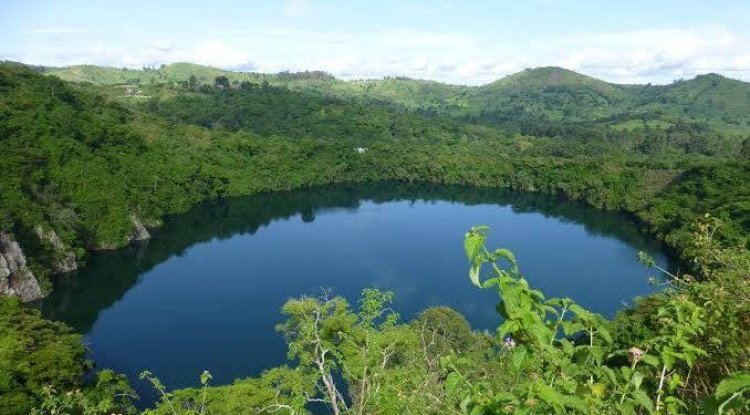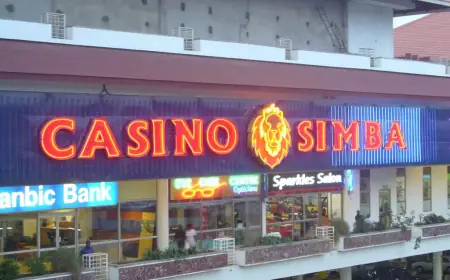Cultural Sites in Uganda, as well as Other Interesting Locations
An exhaustive listing of Uganda's most popular cultural destinations for tourists to visit

Cultural sites in Uganda are becoming more and more popular with tourists, and many people visit them during their trips to the country.
Katereke Prison Ditch
Kabaka Kalema was responsible for excavating Katereke Prison in the latter half of the 19th century. It is a one-of-a-kind relic that dates back to a particularly unstable and violent time in the history of Buganda. A circular ditch that encircles an area approximately 70 metres in diameter creates today's version of this site, which is aesthetically pleasing, quiet, and shady. The ditch and bank together constitute an impressive earthwork that measures approximately 10 metres from top to bottom. The Katereke Prison Ditch can be reached by car in half an hour from Kampala by driving past Buddo on Masaka Road. At the Nsangi Trading Center, which is located directly across from the police post, take a right turn and continue along the dirt road for approximately one kilometre.

Buddo Naggalabi Coordination Site
Since the beginning of the seventh century, the Kabaka of Buganda has been crowned on the grounds of Naggalabi Buddo. It is said that Buganda's accession ceremonies take place on Buddo Hill because it was on that hill in the 13th century that Kintu, the first kabaka of Buganda, killed his brother Bemba and proclaimed himself king. It is the single location in all of Ganda culture that holds the most significance and can be found right in the middle of the Buganda Kingdom. The ceremony to crown Ssabasajja Kabaka Ronald Kimera Mutebi II as Ssabasajja Kabaka took place at Naggalabi on July 31, 1993. Tens of thousands of people were in attendance at the event. The location is very relaxing, and it provides a breathtaking view of the countryside in all directions. After passing the Kyengera Trading Center on Masaka Road, the location can be reached by car in twenty minutes from Kampala.
Wamala Tombs
located on a hilltop with breathtaking scenery all around it. The sacred burial site of Kabaka Suuna II (1836–1856), who was said to have had 148 wives and 218 children, is located in Wamala. Suuna was the final king to be interred within the walls of his own palace, and he was also the final king to have his jaw bone extracted after death. Additionally, he was the first King of Buganda to open the country's borders to trade with other countries. A magical but almost forgotten place, Wamala Tomb is quite simply unique. It is located on a hilltop approximately 2.5 kilometres after the road makes a right turn and is approximately 30 minutes' drive from Kampala along Hoima Road.
Nnamasole Kanyange Tombs
The Kanyange Nnamasole Tombs can be found on a hillside with views of the valley below, which contains the Wamala Tombs. Namasole Kanyange, the mother of Kabaka Suuna II, was laid to rest in Wamala, and her tomb is located there. Her body is contained within the tomb. Additionally, the bodies of subsequent Nnamasoles are stored within it. The tombs are a significant location for rituals and ceremonies, and they are home to a unique sacred drum that is played in order to summon Suuna's spirit. The journey that Kanyange and Suuna took to see each other is commemorated by a path that leads to the impressive Wamala tombs and retraces their steps. After travelling along Bombo Road for twenty-five minutes, take a left turn at the Kagoma Trading Centre to reach the destination.
Baagalayeze Namasole Tombs
The tomb of Namasole Baagalayaze, who passed away in 1916, can be found at this location. She was the mother of Kabaka Mwanga II. As a result of her extremely generous nature, she is held in high regard by the community. Now, the tombs and the enclosure around them have been transformed into a cultural centre that honours the people of Buganda and their rich history. Visitors have the opportunity to take part in a variety of activities, including watching traditional performances (including music, dance, and drama), attempting their hand at arts and crafts, and listening to vivid tales about the kingdom of Buganda and its Kabakas. On Gayaza Road, the Nnamasole Kanyange Tombs can be reached in a little over half an hour by car from Kampala. At the Perverse Trading Center, which is directly across from the large Mvule tree, take a left turn.
Ssezibwa Falls
The Kabakas have always enjoyed spending time at the Ssezibwa Falls, which are known for their natural beauty and spiritual significance. A traditional healer performs ceremonies at this location for people who are looking for love, children, a good harvest, or a successful business deal. The "black river water" tumbles over the rocks into the pool below. It is said that Kabaka Mwanga 11 showed his respect for the falls by planting a massive tree here, and that Muteesa II followed suit by planting another tree. Both trees are revered as sacred gifts bestowed upon the Kabakas by their ancestors. Ssezibwa is a wonderful place to visit if you have any interest in having a picnic, discovering the many shrines that are located throughout the area, or presenting an offering to the spirits.
It is believed that a woman named Nakkungu Tebatuusa, whose husband was Nsubuga Sebwaato who, gave birth to the river while travelling to Kavuma Bukunja. The traditional legend states that Nakkungu Tebatuusa gave birth to twins in the form of water, which became the rivers Sezibwa and Bwanda. The name Sezibwa is derived from the Luganda phrase "sizibwa kkubo," which translates to "my path can never be blocked." According to the locals, the river's flow was unaffected by the various obstacles it encountered along its 150-kilometre-long course. Visit the Sezibwa Falls and enjoy hearing more about this legend from the local tour guides.
It is located along the Jinja Road after Mukono town, which is approximately a 45-minute drive from Kampala. The waterfalls are located one and a half kilometres after taking a right turn onto a dirt road at the Kayanja Trading Center.

Fort Patiko
Samuel Baker constructed a military fort in Patiko that came to be known as both Fort Patiko and Baker's Fort at various points in time. On December 25, 1872, all of the construction work on the fort was finally finished. After Baker's departure in 1888, Emin Pasha and Charles Gordon, who were both serving as governors of the Equatorial Province of the British Uganda Protectorate at the time, made use of the fort during their terms. The inscription "Fatiko, 1872–188, founded by Sir Samuel Baker, occupied by Emin and Gordon" can be found on a plaque that is attached to the wall of the only grain storage building that is still standing in the centre of the fort. The parish of Ajulu, the subcounty of Patiko, Aswa County, and the district of Gulu all still have ruins of the fort.
Bigo bya Mugenyi
The extensive alignment of ditches and berms that make up the ancient earthworks known as Bigo bya Mugenyi can be found in the interlacustrine region of southwestern Uganda. The word "Bigo" means city in the local language. The Chwezi, who are also referred to as the Bachwezi, are credited with being the first people to settle in this part of the Bigo Bya Mugenyi. It is also believed that this particular group of people was the first to settle in what is now known as Uganda between the 11th and 16th centuries. "The fort of a stranger" is what "Bigo Bya Mungenyi" means when translated from its native language.
Karambi tombs
The Karambi Royal Tombs, located approximately 4 kilometres south of Fort Portal Town along the Fort Portal-Kasese Highway, are one of the most revered cultural sites within the Kingdom of Toro. From the outside, it appears to be an ordinary place, but once you enter, you will discover an abundance of mind-blowing facts and details about the site. Karambi Royal Tombs is one of the most revered sites in Toro Kingdom, western Uganda, because it is the final resting place of the kingdom's three former kings (abakama): Omukama Daudi Kyebambe, Omukama George Kamurasi Rukidi III, and Omukama Kaboyo II, as well as other members of the royal family. This extraordinary location also houses the royal implements and regalia of the respective former kings. Among the tools are royal regalia, spears, calabashes, drums, stools, animal skins, and other personal items used by each former king during his reign. In addition, the graves of the princesses, princes, and other royal members are located just outside the tombs. As previously mentioned, the view from the outside may not reveal much, but the rich history contained within each royal tomb will leave you speechless.
Mparo tombs
The Mparo Tombs are a location rich in both history and culture. Omukama (or "King") Chwa II Kabalega, who ruled over Bunyoro Kitara in the late 19th century, is buried in the royal tombs. The royal tombs are located in Bunyoro Kitara. In 1899, British colonialists sent him into exile on the island nation of the Seychelles. The spears, bowls, throne, and other personal effects that belonged to him are displayed inside, above the actual location where he was laid to rest. Additionally, the late Sir Tito Winyi IV, who was the father of the current Omukama, Rukirabasaija Agutamba, is laid to rest at this location. Solomon Gafabusa Iguru
Nakayima tree
The Nakayima tree is located in Mubende Hills, and it is one of the oldest trees from ancient times. The tree is believed to be approximately 400 to 500 years old, and it stands about 40 metres above the ground. The tree was named after the first wife and princess of King Ndahura of the Bachwezi, who had a wife named Nakayima, who was the daughter of the last Bachwezi. Prince Nakayima, who once roamed the Mubende hill, is believed to have vanished in this tree, hence its name, the Nakayima tree. Since then, the tree has been believed to possess supernatural fertility, healing, and good health powers. The Nakayima tree is also believed to solve problems in the community and offer blessings.
Nkoko Njeru Tombs
Nkokonjeru Tombs. These can be found in the Kakiika neighbourhood of the Mbarara district. They contain the tombs of the kings of Ankole, Omugabe Edward Solomon Kahaya II and Omugabe Sir Charles Rutahabaa Gasyonga II. Omugabe Edward Solomon Kahaya II passed away in 1944, and Omugabe Sir Charles Rutahabaa Gasyonga II passed away in 1982 after ruling for 23 years.
Nyero rock paintings
The Nyero rock paintings can be found in the Kumi District of eastern Uganda, which is approximately 8 kilometres (5.0 miles) west of Kumi town proper. Before 1250 years after the Common Era, rock paintings were created in Nyero. They were not documented for the first time until 1913, and subsequent research has described them as being primarily geometric in nature. It is believed that the locations of the rock art once served as sacred gathering spots for the gods. The inhabitants of Teso continue to place a high value on the red and white paintings, but they also find them intriguing due to the fact that their creators are unknown. In the past, the Iteso people of Nyero would make sacrifices and give offerings to the gods in order to appease them and receive help with issues pertaining to rain, misfortune, blessings, and childbearing.

Naggalabi - buddo coronation site
The Naggalabi Buddo Coronation Site is an important cultural site in Buganda Kingdom. It is here that the kingdom's kings are crowned. Since the beginning of the seventh century, Buganda's kings, known as Kabakas, have had their coronation ceremonies held at this strategic location. It is said that Kabaka Kintu, the first King of Buganda, affirmed himself as King of Buganda in the 13th century by ordering the execution of his brother Bemba from Buddo Naggalabi. Since that time, every succession ceremony that has taken place in Buganda has been held on Buddo Hill.
Ndere troupe cultural centre
The Ndere Center presents a comprehensive account of Uganda's past. Reliving Uganda through its music, dances, and oral history is made possible by this programme, which also helps preserve traditional skills and knowledge. The uncommon architecture is a seamless combination of artistic creativity and simplicity that elevates African forms, materials, colours, and construction to heights that have never been reached before. You will be able to appreciate the blissful artistic creativity of Ugandan and African music and performances because the Center is one of the most peaceful places in the city.
Igongo Cultural Centre
On the road that leads from Masaka to Mbarara, a few miles to the north of Mbarara, you'll find the Igongo Cultural Center. The cultural heritage of south-west Uganda is being promoted by this centre, which was opened by Ugandan President Museveni on Christmas Day in 2011. The motto of the centre, which reads "Wisdom is rooted in the past," encapsulates the mission of the centre. The Eriijukiro museum, which has tours that last about a quarter of an hour, the Eitaramiro cultural village, which demonstrates the development of typical Nyankore and Kigezi households, twenty-two bed accommodation, a restaurant (where you can try locally sourced traditional dishes such as millet bread, matooke, and ghee, along with a local drink made from millet or sorghum), and the Nkwanzi craft and book shop
Itaaba kabanyoro
The Itaaba Kyabanyoro can be found atop a hill in the village of Kyabanyoro, which is located within Kinoni Rwampara in the district of Mbarara, and along the highway that connects Mbarara and Kabale. It is therefore one of the most significant historical and cultural sites in the Ankole Kingdom, and it is said to be the site from which Wamala, the last King of the great Bachwezi Empire, crafted the Sacred Bagyendanwa Royal Drum. This makes it one of the most significant historical and cultural sites in the Ankole Kingdom. It was said that the source of dominance, power, and the right to command was contained within this royal drum.
Buganda palace
The Lubiri Palace, which serves as the royal seat of the traditional king (also known as the "Kabaka") of the Buganda Kingdom and is located on top of one of the seven hills that make up Kampala, the capital of Uganda, has witnessed many days of glory in addition to a number of very dark moments.
The Karamojong manyatas
The Karamojong Manyattas, which are the traditional homes of the Karamojong people and can be found in the Kidepo Valley National Park in the north-eastern part of Uganda, are one of the exceptional experiences that can't be had anywhere else in Uganda. The Karamojong Manyattas are a cultural setting of homesteads among the K'jongs. Due to their distinctive cultural way of life, the Karamojong Manyattas have been instrumental in the growth of cultural tourism in Uganda. This way of life is comparable to that of the Masai in Kenya. It is possible to refer to a Karamojong community as a "Manyatta" or an "Ere," both of which refer to an enclosed residential area that is surrounded by sharp thorns and that has small entry points for people but a larger entry point for cattle. There are several families living in one Manyatta, as well as a communal area for the cattle.

Namugongo martyrs' shrine
This Minor Basilica and Shrine of the Ugandan Martyrs is a Catholic church that is dedicated to the individuals who lived in Uganda and gave their lives as martyrs for the Christian faith. The shrine is well known for both its stunning interior and exterior, but what makes it especially notable is its shape and architectural plan. It is built in the form of an African hut, and it is supported by 22 copper pillars that are over 100 feet long. The shrine's wooden doors depict the history of the martyrs.

Batwa pygmies of Bwindi
The enchanting Batwa pygmies of the Bwindi Impenetrable National Park are a hunter-gatherer tribe that has lived side-by-side with the wildlife of this ancient park for thousands of years. They are known as the "Keepers of the Forest," and they reside in the Bwindi Impenetrable National Park. Put on your hiking boots because this excursion will last the whole day.
learn More: https://hereinuganda.com/the-batwa-tribe-keepers-of-the-forest

What's Your Reaction?
 Like
1
Like
1
 Dislike
0
Dislike
0
 Love
0
Love
0
 Funny
1
Funny
1
 Angry
0
Angry
0
 Sad
0
Sad
0
 Wow
0
Wow
0













































































